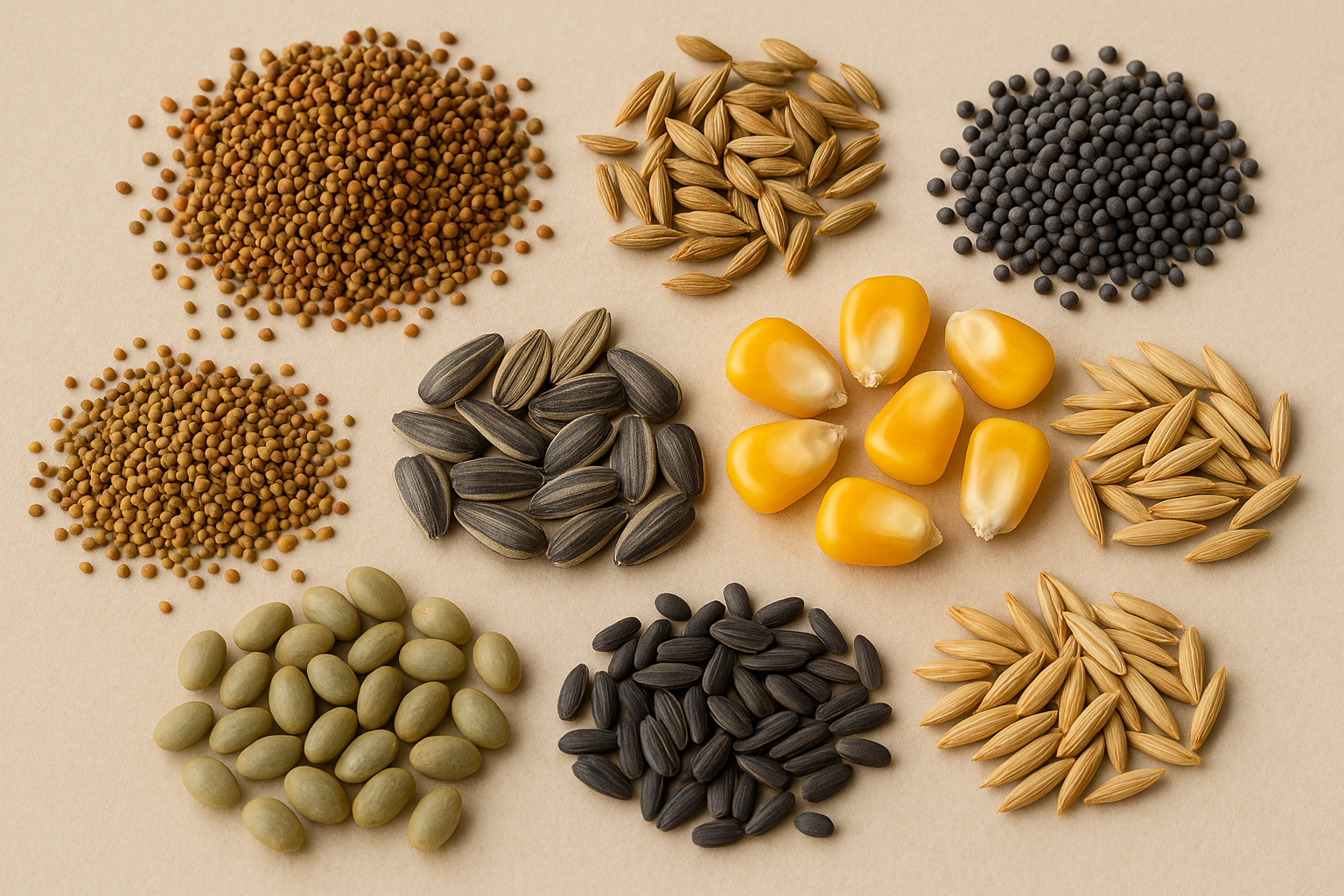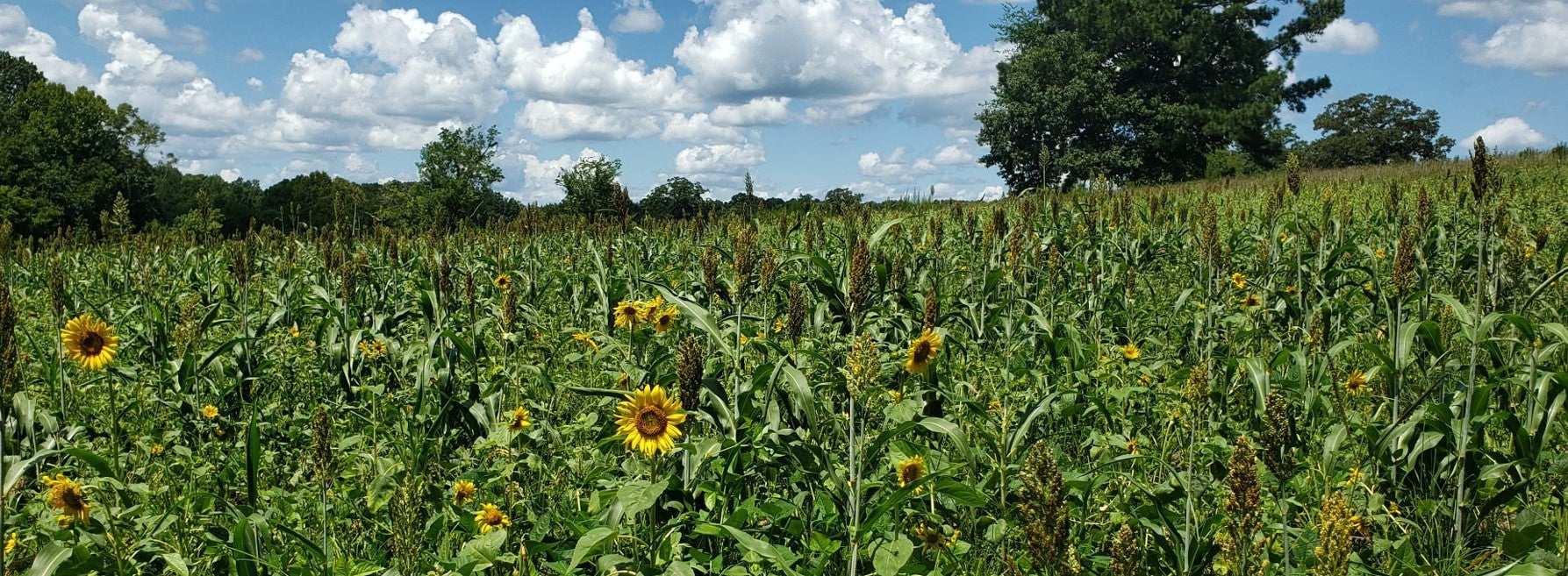Feral Hogs; An Overview of Resource Consumption and Trapping Techniques for Removal
By Gaines Slade
Feral hogs are a hot topic these days among hunters, landowners, and biologists alike. Main stream media has jumped on the trend with documentaries profiling Hogzillas and reality shows depicting all types of hog control specialists. Current hype aside, the real question that most land managers have is “How will feral hogs affect my land management goals and what can I do to control or eradicate them on my property?” The purpose of this article is to address the impact of feral hogs as it relates to desirable species and then simply outline the various methods currently employed to control wild pig populations.
Let us first discuss a general overview of feral hogs and their subsequent impact on desired species. Feral hogs are considered an invasive species. Simply put the reproductive capability of feral hogs is prolific. The two main factors attributing to population expansion are early sexual maturity and a low mortality rate among offspring. Consider several general facts concerning feral hog reproduction.
• Female pigs can be bred for the first time as early as 6 months of age, but sometime in the first 8 to 11 months of their life is more likely.
• In some habitats females have been known to produce three litters per year but an average rate would be closer to 1.5 litters per year.
• Sows can give birth to 10 or more offspring at a time, but a conservative average is 5-6 piglets per litter.
• Studies show the gender ratio will be very close to 50 percent male to 50 percent female.
• Feral hog populations can expand at exponential rates.
The other important piece of the puzzle that allows for rapid population growth is a very low mortality rate among offspring. The sow has a very short gestation period of 115 days. Once the piglets are born she will furiously protect them against any predator. Research shows that 80 percent of newborn pigs will reach sexual maturity and that the only real mortality is due to starvation and occasional predation. Simply put, there are few predators in the southeast that pose any significant threat once a feral hog reaches 30 pounds. Studies show that proper habitat can support a density of well over 100 pigs per square mile. Now that we have talked briefly about how quickly hogs can multiply on your property, let us examine the effects that feral hogs have on habitat.
The intent of this section is to outline the impact a feral hog population will have on desirable species such as whitetail deer, wild turkey, and quail. Rest assured that the presence of hogs will also result in soil and road erosion, forest damage, pasture damage, and implement damage. The main concern that pigs represent to land managers is in the form of direct competition for food resources. To understand how much they compete consider the following:
• The average feral hog consumes 4 percent of its body weight daily.
• Feral hogs are opportunistic omnivores.
• A feral hog will consume just about anything it can get in its mouth, but just like deer, it will choose the more palatable and nutritious option when available.
• The majority of a feral hog’s diet consists of soft and hard mast, row crops, and tubers.
For a comparative example consider these calculations for a one square mile property with a pig density of 80 pigs per square mile.
• 80 pigs at a conservative average weight of 30 lbs per pig
• Each 30 lb pig consumes 4 percent of its body weight daily (30 X 0.04 = 1.2 lbs food per pig per day)
• 1.2 lbs daily X 80 pigs = 96 lbs food per day consumed on your property
• Annually that would be 35,040 lbs of forage consumed on your property by feral hogs
• That is over 17 tons of food taken away from your native species

Not only is the amount of forage that feral hogs consume a concern to land managers, but the rooting method in which hogs feed is extremely destructive to the landscape. Add to this the fact that pigs are predators of ground nesting bird eggs such as turkey and quail. The end result is that a large percent of every dollar you as land manager are spending to create and improve your habitat, is in turn making your property more desirable for feral hogs. The question then is “What can be done to reduce or eliminate feral hogs on your property?” There are a variety of tactics including aerial shooting, use of dogs, fencing, thermal shooting, and trapping. While all of the above can produce results, the method which has the highest cost/benefit ratio and is effective over a wide variety of terrains is a well-executed trapping program. Let us take a look at some of the options available for efficient trapping of feral hogs.
Trapping is the most popular tactic for removing wild pigs and can reduce localized population with constant effort and attention. Hog traps come in a variety of styles and sizes to fit different situations, with the two most popular being box traps and corral traps.
Box traps, or cage traps, are the most common type of trap used to capture wild pigs. They can be built a number of different ways, but are usually from 6 to 12 feet long and 3 to 4 feet wide and tall with a pressure sensitive trigger near the back of the trap to shut the gate once the pigs are inside. Side panels for this trap should be strong, at least 4 gauge metal which can be found at your local farm supply or co-op. My personal preference is to use horse paneling with 2 inch X 2 inch squares. I have found cattle and hog paneling with the larger holes to be unreliable in keeping small piglets contained once trapped. If piglets can get their head through the hole, they will escape. Most box traps work off of a trip wire concept. When the pigs move to the back of the trap to eat the bait, they apply pressure to a wire that is strung across the trap around chest high. Once they apply enough pressure, the gate door is released. It is a very simple design and can be very effective. Most box traps, while extremely portable, are limited to catching a few pigs at one time. Sometimes the first pig in can trip the gate to shut before the other pigs have a chance to get inside. This educates the other pigs in the sounder group and they may become “trap shy.” Because of their relatively small size and portability, box traps are great tools for landowners who may be experiencing random or infrequent hog problems. Moving a trap around frequently can keep hogs guessing and increase your trapping success, but also requires more effort and diligence on the landowner’s part to be successful. Another drawback of the box trap is the capture of non-target species such as deer or bear. Being fully enclosed, any animal that wanders into the trap and hits the trigger will be trapped. Remember this when it comes to bait choice and placement of the trap as you want to avoid the entrapment of any species other than feral hogs.
Corral traps are the most cost efficient way to trap groups of wild pigs. The general rule of thumb when building a hog trap enclosure is the bigger the better. Larger traps not only allow more pigs inside the trap at one time, but also seem to appeal more
to hogs because they feel less confining. When building these circular corral traps, I prefer the 5 foot tall by 16 foot long horse paneling wrapped in a circular design with t-posts placed every 4 to 5 feet to reinforce the paneling. Tie the paneling back in to your trap gate with wire ties or u-bolts. Remember that these enclosures need to contain a wild animal for up to 48 hours so they need to be well constructed and sturdy. Never take shortcuts or assume that the pigs won’t try every possible means to escape. They are extremely powerful and densely proportioned animals which can jump fairly well with a running start. That’s why I recommend the 5 foot high paneling to avoid giving leaping pigs the opportunity to escape. There are a multitude of doors that can be used when trapping with a corral. Swinging doors and guillotine style doors are the most popular and the least expensive to build. They work off of a simple pulley which is hooked to a trigger buried beneath the bait near the back of the trap. When the hogs root around the bait, they will hit the trigger which releases the door.
With these corral style traps, pre-baiting is essential to your trapping success. To pre-bait, lock the gate door open and spread your preferred bait (soured corn is very effective and cost-efficient) in a half moon pattern along the back wall of the trap. Allow the hogs to pass in and out of the trap for a week to ten days and get comfortable being inside the trap. Then re-bait the trap and set the trigger underneath a small pile of bait just off to the side of the half moon area you have previously baited. The concept here is that when a group of pigs enter and begin eating the large area of bait, eventually one hog will get bumped away from the main bait area and over to the small pile with the gate trigger underneath. Once that hog begins rooting, the trigger releases and the door shuts. This delayed method helps in capturing a larger number of hogs as the time before the trigger is tripped is extended due to its placement. However, even the most sophisticated trigger can be tripped by non-target species, wasting your time and money to reset the trap after a “false trip”.
While both the box trap and the corral trap can be effective methods for trapping wild pigs, they are extremely labor intensive and require frequent visits to check their status. Let’s look at an example of what your operating costs would be to monitor a standard box or corral trap at your property. If your property is a two hour drive roundtrip and you make a minimum of two trips per week to check your traps, here is a general breakdown: • 2 hour drive = 120 miles per trip
• 2 hour drive = 120 miles per trip
• 120 miles @ 15 mpg is 8 gallons of gas per trip
• That’s $28.00 per trip with gas averaging $3.50 per gallon
• 8 trips per month at $28.00 a trip = $224.00 a month for gas
• Not to mention investing at least 25 hours of your time monthly!
With those costs and drawbacks in mind, Feral Hog Solutions, LLC took the corral trap concept one step further and now utilizes the Wireless Trap. This setup completely eliminates wasted trips to check empty traps while maximizing your number of pigs per catch. Using a standard corral trap with one of our custom swing doors, we integrated the ability to monitor what is in the trap 24/7 and the power to shut the trap door all from the convenience of your smart phone. An electrical box mounted on the inside of the trap gate is equipped with a motion sensor, infra-red camera, industrial grade modems and a solar panel. When hogs enter through the trap gate the motion sensor is tripped, activating the camera which takes a picture and sends it immediately to up to ten pre-determined cell phones or emails as a picture message. One of the main benefits of the specific camera in this system is the wide angle feature. With this real time knowledge, you are able to see how many pigs are in the trap while also seeing how many are standing outside the trap. Once the entire sounder group enters the trap, you dial the 1-800 number, enter your 4 digit trap id number, and the gate shuts automatically within 4 seconds. You can literally trap pigs from the comfort of your couch! This is by far the most convenient and user friendly trap style available, saving you time and money by never having to check an empty trap again. It also allows you to control when the gate shuts which results in larger catch numbers. The Wireless Trap is on the cutting edge of technology and sets the industry standard in hog trapping. Feel free to contact Feral Hog Solutions, LLC with any questions you may have or to order your Wireless Trap at http://www.feralhogsolutions.net . Also check out links to various hog research articles on our website under the Resources tab!
Posted by Tecomate Wildlife Systems











Leave a comment